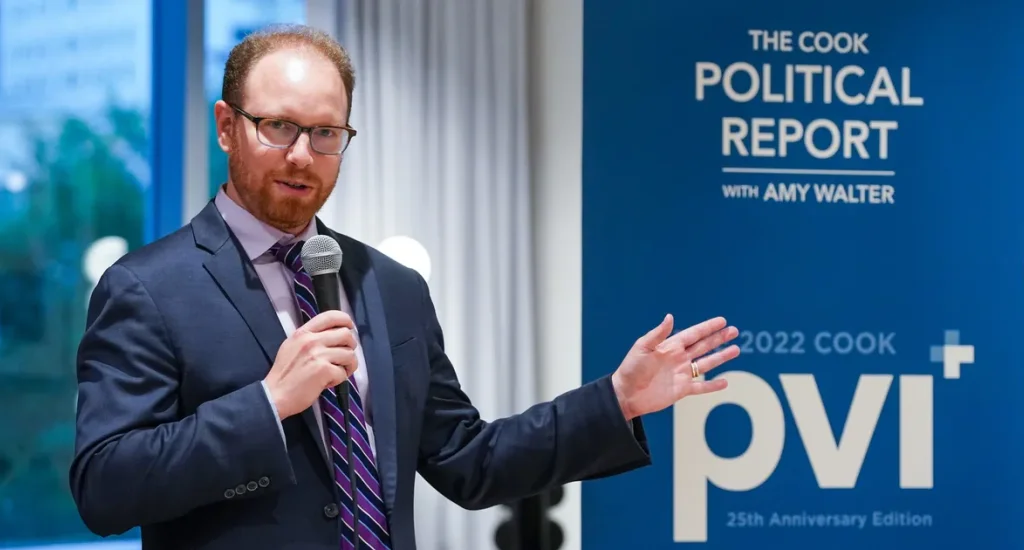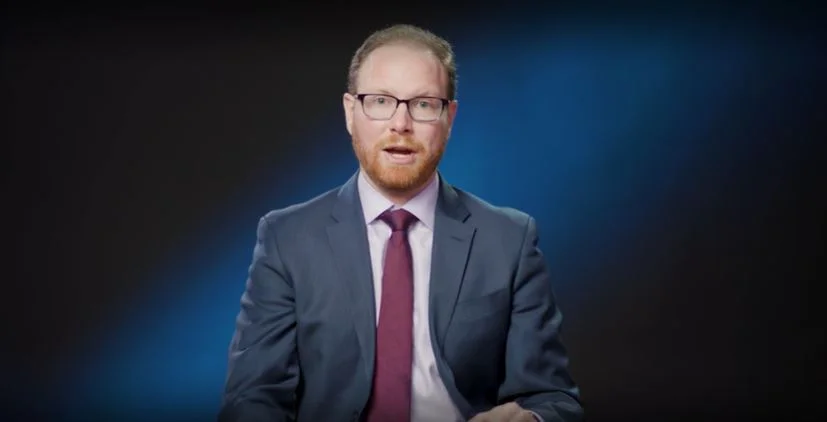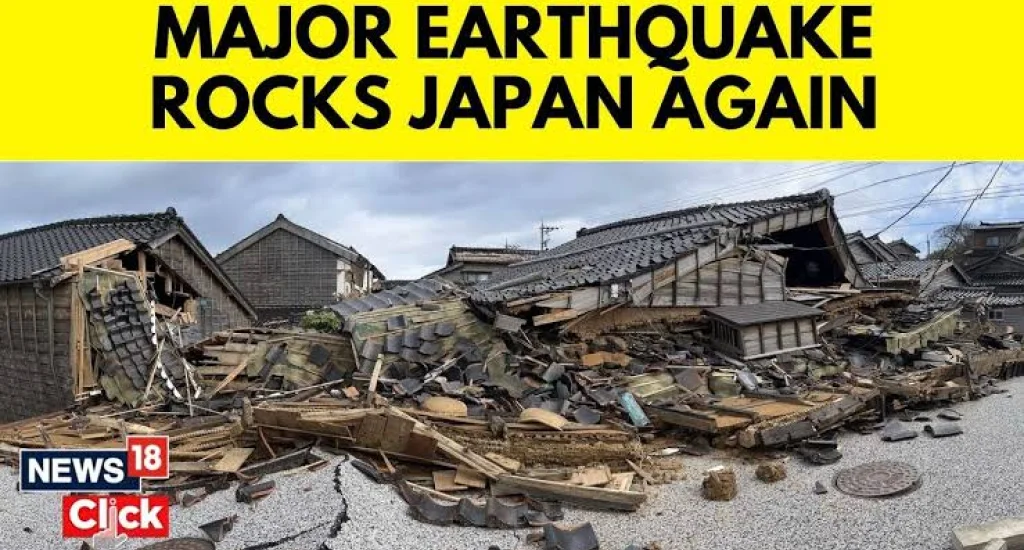
Dave Wasserman Twitter: The Man Who Calls Elections Before Networks Dare
Inside the mind of America's most trusted election analyst — and why his famous phrase "I've seen enough" carries more weight than any exit poll
At 11:47 PM on election night, while major networks hesitate and anchors hedge their bets, a tweet appears that millions have been waiting for. Three words that have become synonymous with electoral certainty: "I've seen enough."
The author? Dave Wasserman, the U.S. House editor for the Cook Political Report and perhaps the most influential election analyst in America — despite never appearing on a primetime cable news panel or commanding a seven-figure television contract.
In an era when trust in media institutions has cratered and political polarization reaches fever pitch, Wasserman has built something increasingly rare: a reputation for accuracy that transcends partisan divides. When he makes a call, Democrats and Republicans alike pay attention — even if they don't like what they're hearing.
The Cartographer of American Politics
Wasserman didn't stumble into election analysis. He's spent more than two decades obsessively studying congressional districts, demographic shifts, and voting patterns with the dedication of a master craftsman. His expertise isn't built on hot takes or ideological positioning — it's rooted in data, precinct-level results, and an almost supernatural ability to read the political tea leaves before they've finished steeping.
"Dave understands American geography and demography better than almost anyone in the field," said a senior political strategist who has worked on multiple presidential campaigns. "He doesn't just look at counties — he knows neighborhoods, he knows which precincts report first, he knows historical trends down to the ward level."

According to the Cook Political Report, Wasserman has correctly called hundreds of House races, often hours before official results are tallied. His track record during the 2020 and 2024 election cycles became the stuff of legend, with his projections proving more reliable than many network decision desks with far larger budgets and teams.
This kind of meticulous expertise mirrors other trusted voices in journalism who've built credibility through consistency and depth. Much like Paul Dehner Jr. became the definitive voice for Cincinnati Bengals fans through years of dedicated coverage, Wasserman has earned his authority one race, one district, one correct call at a time.
The Power of "I've Seen Enough"
Wasserman's signature phrase — "I've seen enough" — has become a cultural touchstone, memed and referenced across the political spectrum. But behind the catchphrase lies a rigorous methodology that most election watchers never see.
When Wasserman makes a call, he's synthesizing multiple data streams simultaneously:
- Real-time precinct results: Understanding which areas report early and what that means for outstanding votes
- Historical benchmarks: Comparing current performance to past elections in identical precincts
- Demographic composition: Knowing the voter makeup of unreported areas
- Vote method analysis: Understanding how mail-in, early, and Election Day votes break differently
This isn't guesswork. It's applied political science combined with institutional knowledge that takes years to develop. And crucially, Wasserman isn't afraid to wait when the data isn't clear — a discipline that separates genuine experts from attention-seeking pundits.
"The hardest part isn't making the call — it's having the patience not to make the call until you're certain. Dave has that discipline in spades."
— Elections analyst quoted by FiveThirtyEight
November 2025: The Analyst Who Shaped a Cycle
As the 2026 midterm elections approach, Wasserman's analysis has become essential reading for political operatives, journalists, and engaged citizens trying to understand an increasingly complex electoral landscape. His district-by-district breakdowns of the House map provide clarity in a media environment often dominated by horse-race coverage and shallow punditry.
Throughout 2025, Wasserman has been tracking redistricting effects, demographic shifts, and candidate quality issues that will define the next election cycle. His Twitter feed — now on X — serves as a real-time political science seminar, offering insights that would cost thousands of dollars if packaged as consulting services.
This democratization of expertise reflects broader changes in how information flows in modern media. Just as traditional gatekeepers have lost their monopoly on breaking news — whether it's FanDuel outages during NFL Sunday or political developments — election analysis has become more accessible to anyone willing to do the work.
The Method Behind the Madness
What separates Wasserman from the crowded field of election analysts isn't just accuracy — it's transparency. He regularly explains his reasoning, shares his data sources, and acknowledges uncertainty when it exists. This intellectual honesty has earned him credibility across the ideological spectrum, a feat that's increasingly rare in American media.
During the 2024 presidential election, while partisan outlets spun results to favor their preferred narratives, Wasserman's analysis remained remarkably consistent: follow the data, understand the context, make calls when justified. This approach occasionally frustrated supporters of both major parties, but it reinforced his reputation as someone interested in accuracy rather than advocacy.
According to a 2024 Pew Research study, Americans across political divides increasingly value journalists and analysts who demonstrate clear methodology over those who simply confirm existing beliefs. Wasserman embodies this trend — his followers may not always like his conclusions, but they trust his process.
The Human Element in Data-Driven Journalism
Despite his reputation as a numbers guru, Wasserman understands that elections aren't just about data — they're about people. His analysis frequently incorporates on-the-ground reporting, conversations with local political observers, and nuanced understanding of regional political cultures that no algorithm can capture.
He's traveled to swing districts across the country, visited diners and town halls, and built relationships with local reporters who provide invaluable context that raw vote totals can't reveal. This combination of quantitative rigor and qualitative insight makes his analysis richer than purely mathematical models.
In this sense, Wasserman's work parallels other forms of specialized journalism that blend expertise with human storytelling. The dedication to craft mirrors how Eric Bickel built his sports radio presence — through consistency, personality, and genuine expertise that audiences can sense and respect.
Criticism and Controversy

No one operates in the political analysis space without attracting criticism, and Wasserman is no exception. Partisans on both sides have accused him of bias when his calls don't align with their preferences. Some have questioned whether early projections influence voter behavior or undermine confidence in electoral processes.
These are legitimate concerns worth examining. Does the race to make the first call sometimes prioritize speed over certainty? Can analyst projections create self-fulfilling prophecies that affect downstream races? Should there be industry standards for when projections are appropriate?
Wasserman has addressed these questions directly, noting that his calls are based on mathematical certainty rather than speculation, and that he's careful not to project races where outcomes remain genuinely uncertain. His willingness to engage critics and explain his methodology has generally defused concerns about recklessness or partisanship.
The Wasserman Effect on Modern Political Coverage
Perhaps Wasserman's most significant impact isn't any single election call — it's how he's changed expectations for political analysis. He's demonstrated that credibility comes from accuracy, transparency, and consistent methodology rather than institutional affiliation or television presence.
This has implications beyond election night. As traditional media institutions struggle with trust deficits and economic pressures, individual experts with demonstrated track records are filling important gaps. The Wasserman model — deep expertise, public accountability, direct audience engagement — represents one possible future for specialized journalism.
Younger analysts now study his approach, understanding that building a reputation for accuracy is more valuable than building a following through controversy or hot takes. Political campaigns hire staff who can replicate his district-level analysis. News organizations structure their election coverage around the frameworks he's popularized.
"Dave didn't just master election analysis — he changed how it's done. Everyone in this field is working in his shadow now, whether they admit it or not."
— Political journalism professor at Georgetown University
Looking Toward 2026 and Beyond
As America approaches another consequential election cycle, Dave Wasserman's analysis will be more crucial than ever. The House map remains competitive, redistricting has scrambled familiar patterns, and demographic changes continue reshaping the electoral landscape in ways that confound simple narratives.
Wasserman has already begun his characteristic deep dives into vulnerable districts, analyzing everything from local candidate recruitment to micro-targeting strategies that will define individual races. His early assessments of the 2026 map suggest a highly competitive environment where control of the House could swing on a handful of contests — exactly the kind of scenario where his expertise proves invaluable.

But beyond any specific election, Wasserman represents something important in American civic life: the possibility of trusted, nonpartisan expertise in an age of extreme polarization. Not everyone will agree with his conclusions, but his process remains transparent, his methodology sound, and his track record speaks for itself.
In a media landscape crowded with noise, exaggeration, and performative outrage, Dave Wasserman offers something refreshingly simple: careful analysis, honest assessment, and those three words that have come to mean more than any network projection — "I've seen enough."
And when he says it, millions of Americans — regardless of party — believe him. In 2025, that kind of trust is perhaps the rarest commodity in American media.
Related Articles




